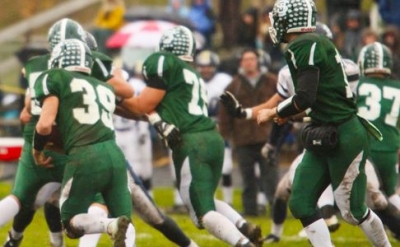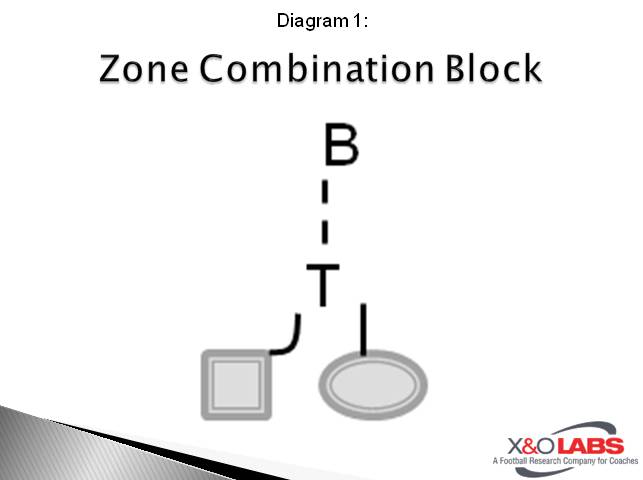By Rich Alercio
Head Football Coach, Assistant Athletic Director
St Johnsbury Academy (VT)
Introduction:
 There are differences and similarities between combination blocks and double teams for offensive linemen. Regardless of your offense (Spread, Pro-style, Wing T), or your offensive line schemes (Man, Zone, Gap) you will inevitably have scenarios where two offensive linemen are engaging with one defensive lineman and working to a linebacker. Combination blocks are most often associated with zone blocking schemes, but they occur in almost every scheme you could run.
There are differences and similarities between combination blocks and double teams for offensive linemen. Regardless of your offense (Spread, Pro-style, Wing T), or your offensive line schemes (Man, Zone, Gap) you will inevitably have scenarios where two offensive linemen are engaging with one defensive lineman and working to a linebacker. Combination blocks are most often associated with zone blocking schemes, but they occur in almost every scheme you could run.
The Combination Block
There are four scenarios in zone blocking for offensive lineman. They can be either covered or uncovered. When covered, they can be covered with a defensive lineman on their playside shoulder or backside shoulder. A head up defender is treated as covered on backside shoulder for the purposes of combination blocking. When uncovered, they could have a defensive lineman in their playside gap or their playside gap could be open.
The combination block scenario is created when one offensive lineman is covered with a DL on his backside shoulder (inside zone right with the DL on his left shoulder) and an adjacent offensive lineman to his back side is uncovered (See Diagram 1).

In the zone blocking scheme, all offensive linemen must step with the same foot. On inside zone right, for example, every lineman steps with his right foot. In Diagram 1 (above), the covered lineman (right guard) will take a base step (vertical drive step) with his right foot. The uncovered lineman (Center) will execute a reach step (vertical step with lateral displacement) with his right foot. Both will utilize the “Heel Replaces Toe” concept in determining the vertical distance of the step. The lateral distance of the reach step of the uncovered lineman is dictated by split and alignment.
The second step for each lineman will mirror the path of the first step. The covered lineman will vertical drive while the uncovered lineman work for lateral displacement. The vertical distance of the second step is such that the heel of the second step lands at the same vertical depth of the toes of the first step (heels never pass toes).









